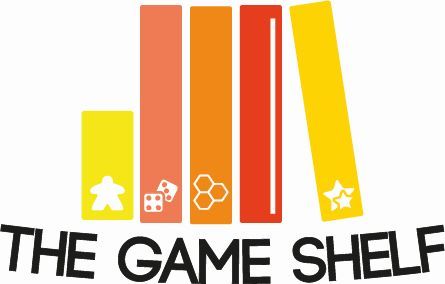Game Title: Patchwork
Designer: Uwe
Rosenberg
Manufacturer: Mayfair
Year: 2014
 “Barbara thinks she
has the best quilt this side of Happy-Oaks retirement home, but I’ll show her,
I’LL SHOW THEM ALL!”
“Barbara thinks she
has the best quilt this side of Happy-Oaks retirement home, but I’ll show her,
I’LL SHOW THEM ALL!”
Buttons are the currency in patchwork, and also the victory
condition, at the end of the game the player with the most buttons wins.
Securing a good income of buttons by picking patterns with buttons on them is
important, but the pieces are well balanced, large tiles with buttons on them
often take a long time and cost a lot of buttons to buy in the first place.
Small pieces without buttons tend to be cheaper yet remain useful for filling holes. The problem with holes in your quilt is twofold, you have a
9x9 grid, but for every gap left at the end of the game you have to pay 2
buttons back to the bank. Also the first player to make a complete 7x7 square
is given a bonus 7 buttons at the end of the game, so you need to fill those
holes quickly if you want to earn the bonus.
 “Barbara thinks she
has the best quilt this side of Happy-Oaks retirement home, but I’ll show her,
I’LL SHOW THEM ALL!”
“Barbara thinks she
has the best quilt this side of Happy-Oaks retirement home, but I’ll show her,
I’LL SHOW THEM ALL!”
Patchwork is a
2-player quilting-themed game in which you make a quilt... no, wait, come back
its actually fun! In patchwork you take turns deciding which piece of fabric-pattern
you want to add to your quilt, the patterns are all in different sizes so you
have a Tetris-like situation while
you try and make unusual shapes fit in your square play area without leaving
gaps.
Each turn you have a choice of the three patterns that are
past the wooden marker, you pick one, paying the cost in buttons and then place
it on your quilt board. After this you move your token ahead on the central
track by the amount of time printed on the pattern you took and move the wooden
marker to the empty spot from where you took the pattern. As the game goes on
the marker will rotate around a circle of patterns, skipping over the ones
people don’t want/can’t afford. Often putting the marker in a good spot (one where
your opponent has limited/bad choices) is as important as taking a good pattern
for yourself.
 |
| The game set up ready to go, the wooden pawn (center-right) stands before the three tiles you can buy and then moves to the empty space left by a bought tile, thereby rotating around the map. |
Patchwork is
relatively light and quick 2-player game but has plenty of tactical depth; you
have to strike a balance between getting the best tiles for your board, foiling
your rival’s quilt-making plans and earning a good profit. I have to say the
theming, while well done, isn’t exactly fascinating, and the developers have missed an opportunity in that while they made the time track double sided, both sides are
identical in function, I know the length of the track is vital to game balance, but I think a B side would let you play around a little with button/square placement. Nevertheless the
game is fun and I would encourage people who find themselves with 1 regular
gaming buddy to pick it up
6.5/10


No comments:
Post a Comment